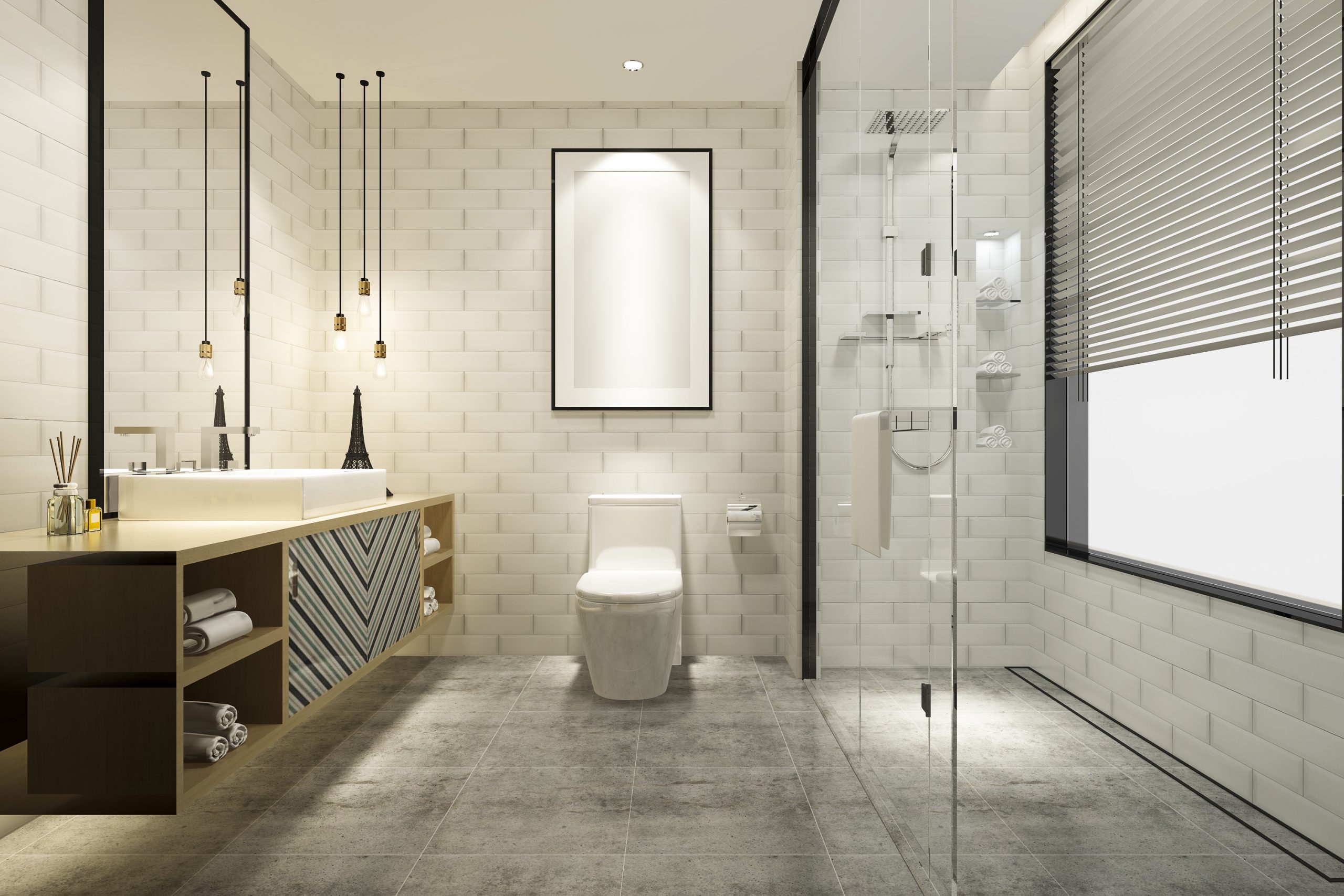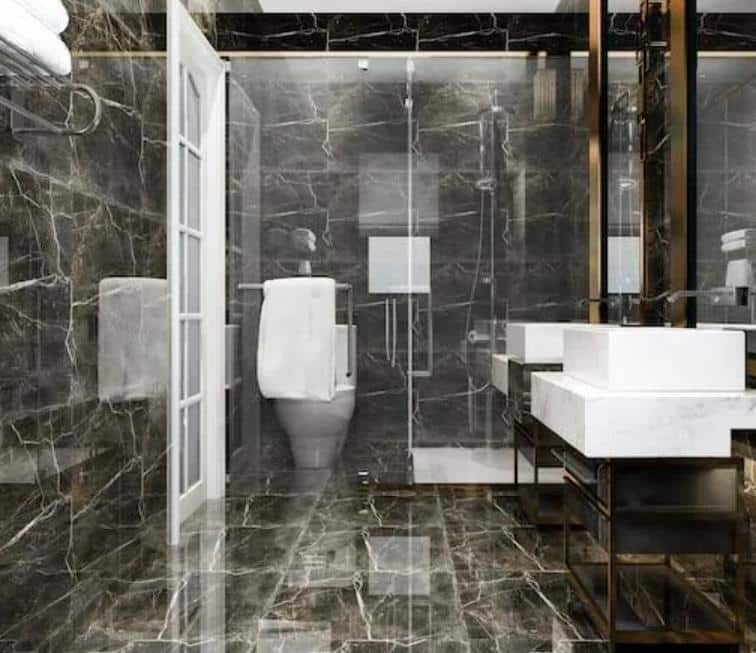
Tile Options for Bathrooms

Choosing the right tiles for your bathroom can transform the space from ordinary to stunning. At Clearview Renovations, we understand that selecting the right material, pattern, and layout is essential for aesthetics and functionality. Whether you’re after a sleek modern look or a classic timeless design, the right tile choice can make all the difference.
Key Takeaways
- Tile Material Matters: Each of the porcelain, ceramic, and natural stone has unique benefits.
- Patterns Create Impact: Herringbone, hexagonal, and subway layouts can redefine your space.
- Durability is Key: Moisture-resistant and slip-resistant tiles enhance longevity and safety.
- Colours & Finishes Influence Mood: Light tones expand space, while textures add character.
Popular Tile Materials for Bathroom Renovations
Exploring bathroom tile ideas can help you find the perfect option for your space. Bathroom tiles come in a variety of materials, each offering unique benefits in terms of style, durability, and maintenance. Some materials are better suited for wet areas, while others may provide the look you’re after without sacrificing practicality.
-
Ceramic and Porcelain Tiles
Ceramic and porcelain tiles are among the most popular choices for bathroom renovations process due to their durability, versatility, and ease of maintenance. Both materials are kiln-fired and come in various shapes, sizes, and finishes, making them adaptable to virtually any design style. Porcelain, in particular, is denser and more water-resistant than ceramic, making it ideal for areas with high humidity, such as shower floors and walls. Proper waterproofing is essential when using these tiles to prevent moisture buildup and protect underlying surfaces from water damage, ensuring long-term durability and structural integrity.
Advantages: Affordable, wide range of colours and patterns, easy to clean.
Drawbacks: Porcelain can be heavier and more challenging to cut, making it a bit more difficult for DIY projects.
-
Natural Stone Tiles (Marble, Granite, Slate, etc.)
Natural stone tiles bring a touch of luxury to a bathroom. Marble tiles are particularly popular for their sophisticated appearance and are often used in high-end bathroom designs. Granite, slate, and travertine are also common natural stones used for bathroom floors and walls. Stone tiles have an unmatched natural beauty and unique patterns that give your bathroom a timeless and elegant feel.
Advantages: Adds luxury and character, each tile is unique.
Drawbacks: Higher cost, requires sealing to prevent staining, more difficult to maintain.
-
Glass Tiles
Glass tiles are often used for decorative accents or as full tile installations in bathrooms. These tiles come in vibrant colours, and their reflective properties help to make small bathrooms appear larger and more open. Glass tiles are especially popular for backsplashes and shower walls.
Advantages: Reflective, adds brightness, modern look.
Drawbacks: Can be more expensive, slippery when wet, and prone to cracking if not installed properly.
-
Mosaic Tiles
Mosaic tiles, often made from small glass, ceramic, or stone pieces, are popular in bathroom renovations for creating intricate designs or focal points. They are frequently used for shower floors, accent walls, or backsplash areas. Mosaics offer endless design possibilities, from geometric patterns to more organic or artistic designs.
Advantages: Customisable, unique designs, ideal for curved or irregular spaces.
Drawbacks: Time-consuming installation, grout lines can be harder to clean.
-
Cement and Encaustic Tiles
Cement and encaustic tiles are becoming increasingly popular in bathroom designs due to their bold, artistic appeal. These tiles feature intricate patterns and vibrant colours, making them perfect for those who want to add a striking design element to their bathroom. Encaustic tiles, made from clay and cement, feature hand-painted patterns that are durable and often used in vintage or boho-inspired bathroom designs.
Advantages: Bold patterns, durable, heat-resistant.
Drawbacks: Requires regular sealing to maintain, which can be more expensive.
Popular Tile Patterns for Bathrooms
Tiles aren’t just functional—they can also transform the look of your bathroom depending on how they’re arranged. Various tile patterns can make a dramatic impact on the aesthetics and ambience of the space.
-
Herringbone
The herringbone pattern is a timeless and elegant design that adds movement and depth to any bathroom. It consists of rectangular tiles arranged in a V-shaped pattern, creating a sophisticated yet dynamic look. The pattern works well with both large and small tiles and can be used on walls or floors.
Best for: Accent walls, shower areas, and floors.
Why it’s popular: The pattern provides visual interest without being overwhelming and suits a range of design styles.
-
Subway Tile
Subway tiles are perhaps the most classic and widely used bathroom tile pattern. Typically made of ceramic, they are rectangular and often used in a grid layout, either stacked horizontally or vertically. Subway tiles offer a clean, simple, and timeless aesthetic that suits modern, minimalist, or traditional bathroom designs.
Best for: Shower walls, backsplash areas.
Why it’s popular: Affordable, easy to maintain, and versatile in design.
-
Chevron
Similar to the herringbone pattern, the chevron pattern creates a zigzag effect with rectangular tiles. The difference lies in how the edges are cut, resulting in a continuous V-shaped pattern. Chevron tiles can create a more modern or dynamic appearance, making them perfect for feature walls or flooring.
Best for: Shower floors, accent walls, or feature areas.
Why it’s popular: Striking and modern, it adds energy and style to a bathroom.
-
Basketweave
The basketweave pattern is a classic design made by interweaving rectangular tiles, resembling the woven texture of a basket. This pattern offers a vintage or retro look, often used in traditional bathroom designs, though it can also be adapted to more contemporary styles depending on tile colour and material.
Best for: Floors, especially small bathroom spaces.
Why it’s popular: It’s a timeless pattern that adds texture and interest, while being relatively easy to install.
-
Grid or Straight Lay
A simple grid or straight-lay pattern involves arranging rectangular tiles in perfectly aligned rows and columns. It’s a clean, straightforward look that works well in a variety of bathroom styles, from modern to traditional.
Best for: Floor and wall tiles in minimalist bathrooms.
Why it’s popular: It’s timeless, easy to install, and suits a wide variety of bathroom designs.
Tile Layouts for Bathroom Spaces
How tiles are laid out can significantly affect the overall feel and functionality of your bathroom. A well-thought-out layout can make a small bathroom feel more expansive while creating an interesting focal point in a larger space.
-
Vertical vs. Horizontal Layouts
Tiles can be arranged vertically or horizontally, and orientation plays a significant role in how space is perceived. Vertical layouts make a bathroom feel taller and more spacious, while horizontal layouts can make the space feel wider and more expansive.
Best for: Small bathrooms (vertical), larger bathrooms (horizontal).
Why it’s popular: Horizontal tiles can make narrow bathrooms look wider, while vertical tiles can give a sense of height in a cramped space.
-
Diagonal Layout
A diagonal tile layout, where tiles are placed at a 45-degree angle, is a great way to create a unique and dynamic look. This layout can also make a room appear larger and adds a level of sophistication to the design.
Best for: Small bathrooms, showers, and accent walls.
Why it’s popular: It enhances the space and creates a more visually interesting pattern.
Conclusion
At Clearview Renovations, we specialise in crafting stunning bathroom transformations using premium-quality tiles and expert design strategies. Whether you’re aiming for modern minimalism or intricate luxury, our team can help you achieve the perfect balance of aesthetics and functionality. Ready to upgrade your bathroom? Contact Clearview Renovations today for expert advice and professional installation.
FAQs:
Are large or small tiles better for a bathroom?
Large tiles can create a seamless and spacious look, while small tiles allow for more intricate patterns and slip-resistant surfaces.
How do I choose a tile colour for my bathroom?
Light-coloured tiles make small bathrooms appear bigger, while darker tones add drama and sophistication.
Do bathroom tiles need to be sealed?
Porcelain and ceramic tiles do not need sealing, but natural stone tiles require regular sealing to prevent moisture absorption.
Can the same tile be used on both the floor and walls?
Yes, but ensure that floor tiles have adequate slip resistance to prevent accidents.
- Category :
- Type :
